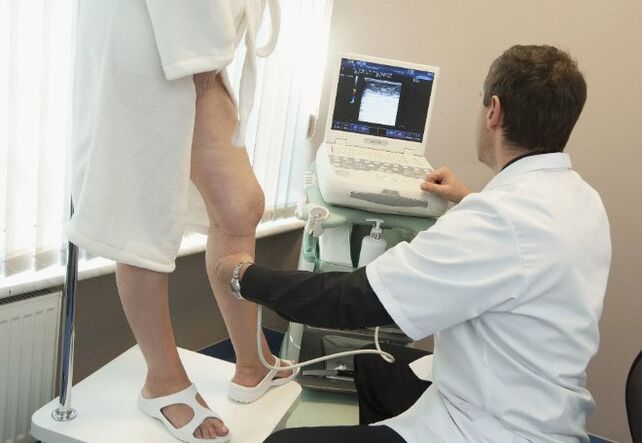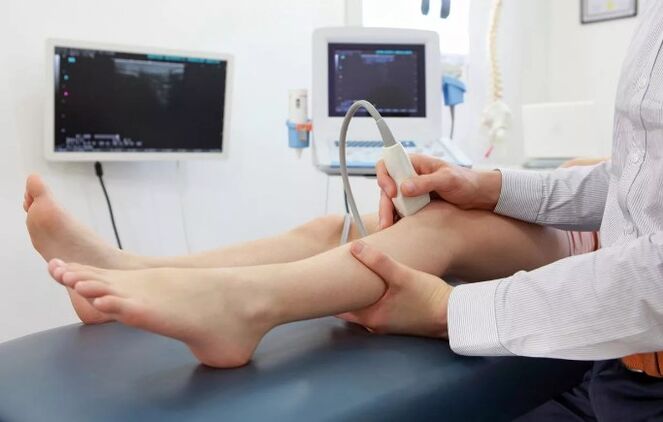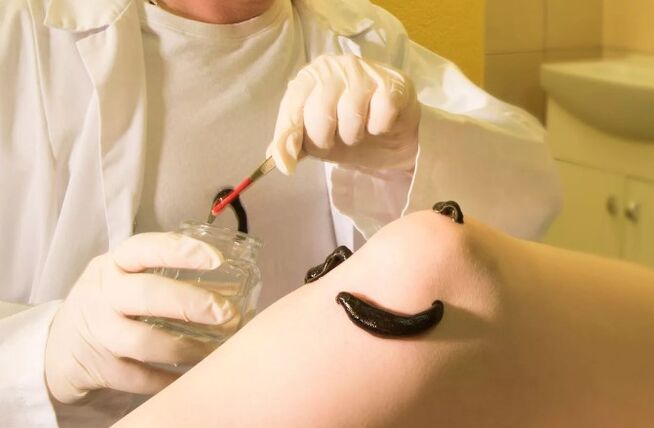Vascular diseases are a fairly common phenomenon that can happen to everyone. Like many other diseases, varicose veins have their own stages, and if the initial manifestations of pathology are accompanied more often by complaints, the last stage is not only dangerous for health, but also for human life. In order to avoid the beginning of such serious consequences such as disability and others, it is necessary to know the main features of the manifestation of varicose veins, its development and possibilities to prevent his complications.

The concept of varicose veins
Varicose veins are an illness that influences the muscle and connective tissue layer of the vessel wall and its flap apparatus. As a result, the veins are expanded, the blood circulation in this place, the reverse blood blood through the vessels.
Most people know about varicose veins on their feet. However, there are other localizations of the disease because the ships can be affected in any part of the body.
In medical practice, the veins of the pelvic organs (bladder, uterus), perineum (scrotum, rectum, vagina) are mostly diagnosed in medical practice. In any case, the clinical image of the disease depends on the place of damage and the stage of the pathology.
Varicose veins in men and their characteristics
At a young age, a young man (an average of 10-12 years old) can encounter an illness such as varicose veins of the veins of the scrotum.In the scientific state, this state is called "varicocele". It can be found during a simple examination and palpation of the scrotum. Clinically varicocele manifested by a number of symptoms, including:
- Pain in the side or half of the affected scrotum, which increases after physical activity;
- Heavy in the testicle;
- Infertility.
Often, however, Varikozele cannot show up at all and be identified during a planned examination by accident.
This disease distinguishes three stages:
- Easy expansion of the veins, which can be seen in the implementation of the Valalva sample (effort);
- Veins are visible and visible in a quiet state of the patient;
- The ships are sharply changed and convincing and full of blood. The testicle in the area affected by the disease is reduced and has test consistency.
In adult patients, varicose veins of a scrotum are often diagnosed in the treatment of a doctor with complaints about the inability to have a child. There is a theory according to which varicocele influences fertility (the ability to reproduce offspring) by increasing the temperature within the scrotum, which has a negative impact on the testicle and spermatogenesis. In addition, this type of varicose veins in men is often combined with damage to the vessels on the legs.

The diagnosis of the disease is simple.As already mentioned, you can suspect varicose veins of the scratch sac when examining a normal examination, and then an ultrasound examination of the vascular jet should be carried out to confirm this. Only a surgical intervention is used as a treatment method: the doctor simply ligates varicose veins, the blood circulation is carried out according to anastomoses. However, it should be taken into account that the operation does not guarantee complete healing as with varicose veins. In addition, the disease is recurring in many cases.
Features of varicose veins in women
Pelvic varicose veins.For women, this disease is the risk of fetus. As mentioned above, varicose veins can occur in any body part, including in the pelvic area. During pregnancy, the situation is worsened because the vessels of the abdominal cavity are first stretched when the fetus is growing, and secondly, the uterus increases the size of increasing pressure on it. Due to these processes, the blood flow to the placenta is disturbed, which can lead to its rejection. In this case, of course, the likelihood of losing a child increases significantly.
Sometimes debut by varicose veins during pregnancy.Before conception, a woman could not suspect that she had a tendency towards illness. During the time of the fetus, however, the female body is exposed to certain changes in the body that can provoke some diseases, including varicose veins. Such changes include:
- Change of hormonal background;
- Increasing body weight;
- Anatomical changes.
In addition, the number of births is directly proportional to the risk of subsequent pathology. In addition to pelvic messicas during pregnancy, other complications can occur:
- Uterine veins during birth;
- Thrombophlebitis;
- Dermatitis, trophic ulcers;
- Venous lack.
Pregnancy is therefore a factor that unfortunately can cause varicose veins because it contributes to a faster development of pathology and requires preventive measures with a specific diagnosis.
Other consequences of varicose veins
Thrombophlebitis.Varicose veins and lack of veins often lead to inflammation of the walls of blood vessels - phlebitis, which can be combined with the formation of blood clots - thromblochtitis. Basically, this disease influences the vessels of the lower extremities, with the patients in the affected areas of the legs complain about severe pain. The symptoms of a general inflammatory reaction are referred to: high temperature, weakness. If the treatment does not begin in time, the process applies to other veins, the patient's condition deteriorates.

Thromboembolism.In the presence of thrombophlebitis and varicose veins, there is a risk of a serious complication - thromboembolism. Due to the separation of the blood clot, it occurs from the wall of the vessel, followed by the blocking of the most important tribes that nourish the heart, light and brain.
Initially, a blood clot can be in the leg, for example (this is the most common). From the lower extremity, however, it is forced to move through the blood flow to different parts of the body. As a result, the blood clot leads into smaller branches of the vascular system and causes a collapse, whereby the blood flow to the area is disrupted with the occurrence of ischemia and then necrosis. Clinically, this manifests itself through a heart attack, a stroke or lung and fat (thromboembolism), which often ends death.
The treatment of patients who come such a diagnosis should only be carried out in intensive and intensive care units. Measures to support the patient in this case should be taken immediately - only in this case the patient has the likelihood of redemption.
Dermatitis.Most of the time, this unpleasant complication occurs on the inner surface of the lower leg and shows itself as a series of symptoms, including:
- Skin thinning;
- Epidermal pigmentation;
- Itching the affected area;
- The appearance of blisters that tend to "open", which leads to a skin layer;
- Violation of the sensitivity of the affected area.
Dermatitis does not heal well, can hardly be treated. The presence of a thrombus includes the occurrence of trophic ulcers - death sections of the skin. In the future, an infection could be associated with ulcers from which purulent wounds can appear.
Telengioectasia.This cosmetic defect, which looks like vascular "stars", is a sequence of rutures of small surface capillaries and a sign of the initial level of varicose veins.
Hemorrhoids.This is a very common illness - nothing more than varicose veins of the rectum. It manifests itself through the development of the so -called hemorrhoid nodes that can often go out, break and inflamed. This leads to considerable concerns for patients.
Diagnostic methods

The simplest and most affordable path to recognize varicose veins and its complications are the ultrasound -doubles of the lower extremities. During this study, blood flow, blood vessels and the condition of your walls are assessed as a whole. Therefore, the above diagnosis helps with the detection of blood clots. In addition, all patients with varicose veins are required to consist of surgical intervention in order to rule out the presence of blood clots in order to avoid complications.
In cases in which the patient is suspected for venous deficiency or thrombosis, doctors recommend X -ray contrast phlebography (the method for evaluating the work of the veins).
For this purpose, a special serum albumin is inserted into the ship, according to which an X -Ray is recorded on which impulses from veins are registered. Then the result is evaluated.
You can complete the examination with computer tomography with the contrast of military tribes. This method is the most accurate but more expensive. However, this diagnostic method not only enables vascular diseases to be identified, but also to evaluate the condition of other body systems and tissue.
Treatment of complications
The therapy for the consequences of varicose veins depends on the current state of the patient and directly on the type of complication. Therefore, thrombophlebitis requires the prescription of blood aging, anti-inflammatory medication, antibiotics, painkillers. If the inflammatory process decreases, physiotherapy, hirudotherapy (treatment with leeches) is recommended. Operation can be proposed as an ETIOTROPE treatment - league and removal of veins.
Trophic ulcers are treated poorly.The surgeon removes the areas of necrosis and prescribes dressings with antiseptic and ointments. Together with these manipulations, antibacterial therapies and blood flow are carried out in Vienna.
Vascular stars are eliminated by sclerotherapy, ie the so -called "gluing" of the lumen of the veins. After the procedure, wearing compression lines is prescribed for relapse prevention.
Other complications such as hemorrhoids, varicoceles and a varicose vein of the pelvis can only be surgically healed after a thorough examination and identify the affected vein.
forecast

An unfavorable forecast is observed in the case of thromboembolism of the lung artery, the number of deaths in which 75%are reached. In addition, thrombophlebitis with trophic skin lesions has a non -installed feature, since changes in the blood vessels occur in such a disease and the risk of infection is also increased, which leads to a number of complications. The consequences of the disease can often lead to the patient to disability.
There are signs of the provision of a patient for disabilities:
- the presence of thrombosis and transferred thromboembolism;
- recurring erysipelas;
- Postromboplebitic syndrome;
- Ineffective surgical treatment.
Most of the time, patients with the last stage of varicose veins with a persistent impaired performance are given a disability.

























